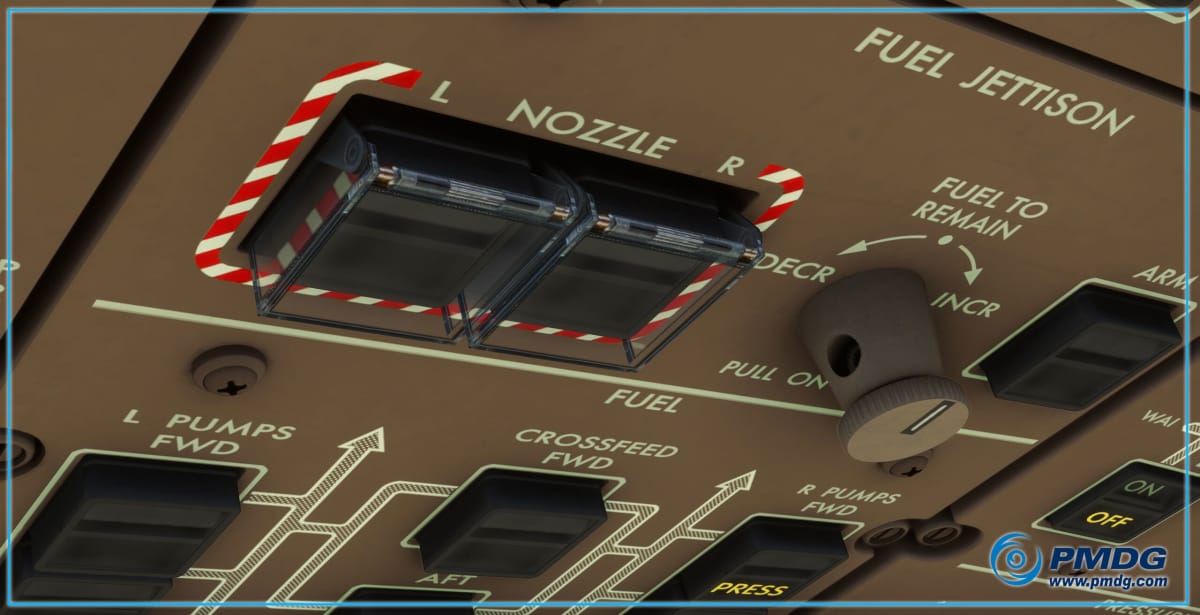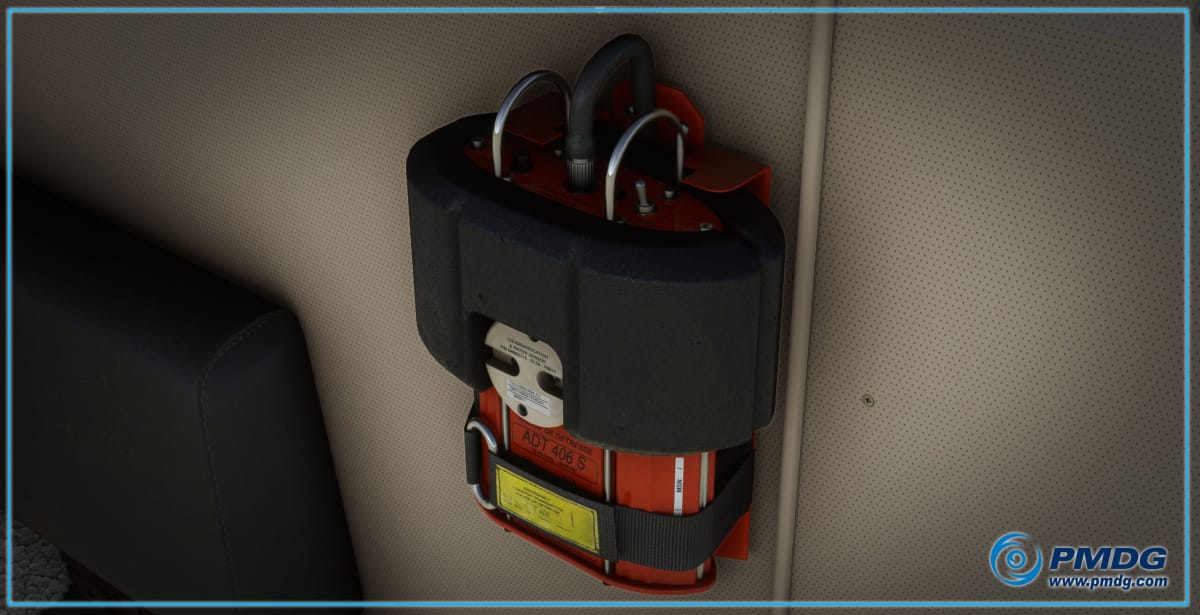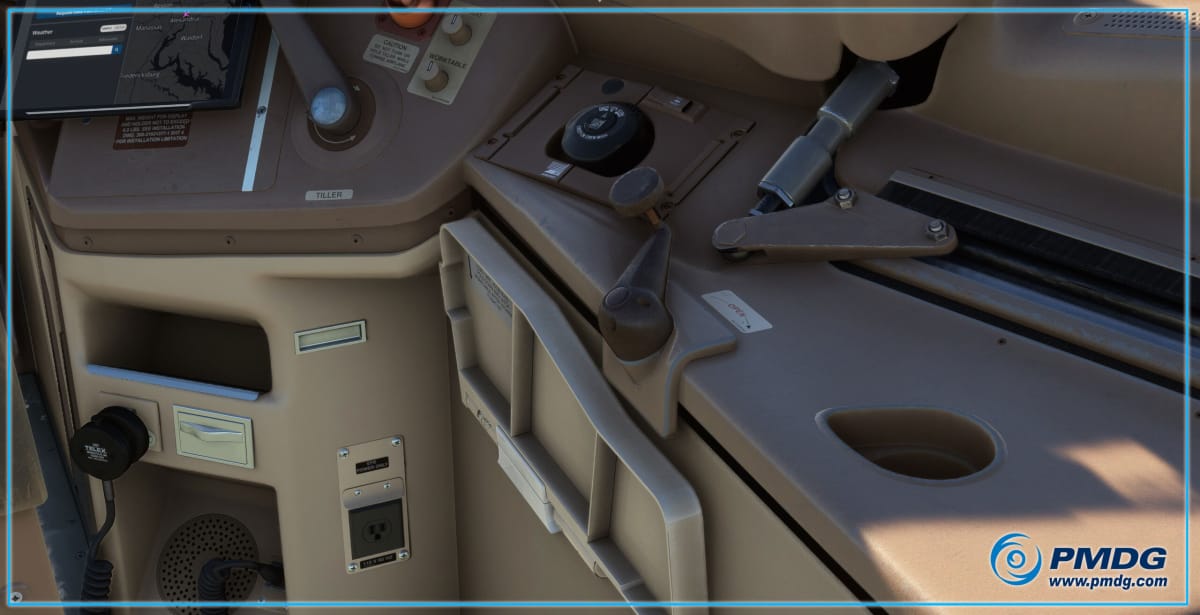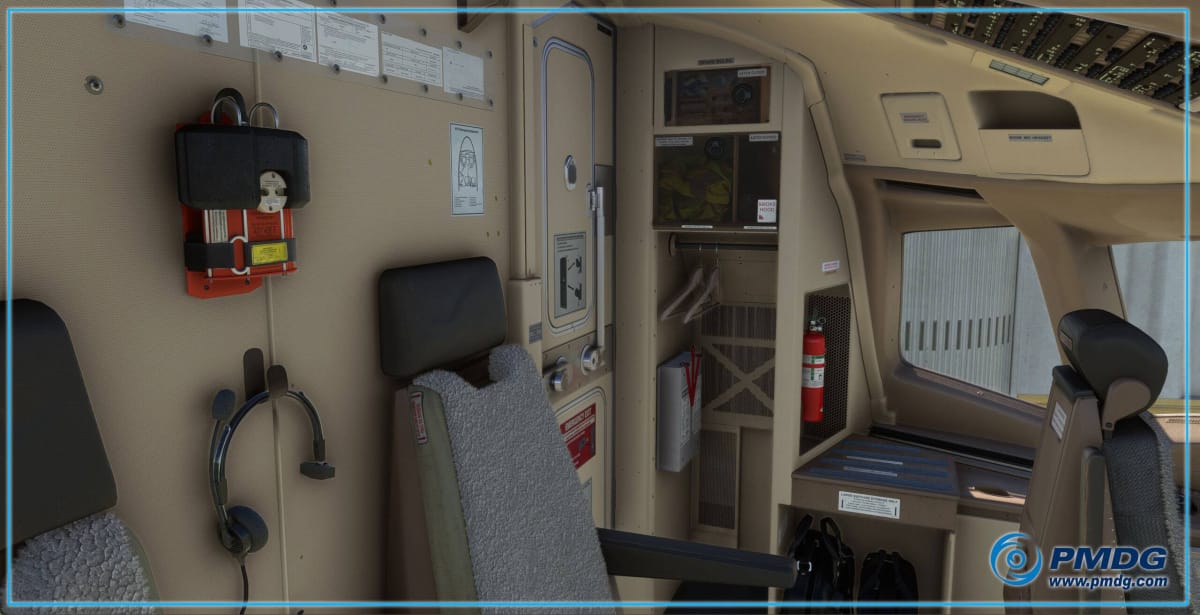Review: Frameworks Laptop 16 Is Unique, Laudable, Fascinating, And Flawed

| Feature Overview: Framework Laptop 16 | |
|---|---|
| Operating System | Windows 11 23H2 |
| the processor | AMD Ryzen 7 7940HS (8 cores) |
| SAT | 32 GB DDR5-5600 (expandable) |
| graphic processor | AMD Radeon 780M (integrated)/AMD Radeon RX 7700S (dedicated) |
| solid state storage | Western Digital Black SN770 1TB |
| the drums | 85 Vtch |
| the screen | Uncensored 16-inch matte screen with a resolution of 2560 x 1600 and a frequency of 165 Hz. |
| communication | 6 USB-C ports (2 USB 4, 4 USB 3.2) with customizable expansion card adapters |
| Weight | 2.1 kg (4.63 lb) without GPU, 2.4 kg (5.29 lb) with GPU |
| Cost of testing | The latest version costs $2,499, the self-made one without an operating system - $2,421. |
Now that the Framework Laptop 13 has undergone three refresh cycles, including one that replaced Intel processors with AMD processors in the same chassis, the company is aiming for something bigger.
Today we're looking at the first Framework Laptop 16, a workstation/gaming laptop that aims to do what the Framework Laptop 13 did with a thin and light ultraportable. Somehow, what users of these types of systems need most is a Framework Notebook; It's an even bigger investment than a thin and light laptop, and upgrading a single CPU, GPU, memory or storage can add years to a system's lifespan, just like upgrading a desktop PC.
Laptop 16 combines ideas from the original Laptop Framework with completely new mechanisms for customizing your device's keyboard, adding and upgrading a dedicated GPU, and installing other modules. The result is a relatively large and heavy laptop compared to many non-renewable alternatives. And you better believe the Framework will deliver on its scalability promise sooner rather than later, because the laptop's current ability to upgrade and expand is pretty limited.
But the company has done a great job of building credibility with the Laptop 13 frame: If you don't mind the Laptop 16's design, there's a good chance you'll get some interesting upgrades. In a year or two.
Summary
- Design changes and new improvements
- Accessing the motherboard, fixing the ports
- Productivity
- Battery life
- Scattered thoughts
- Keyboard, trackpad and separators
- Fan noise
- Disappointing speakers, webcam
- Unique but not (yet) mandatory
- ok
- It's bad
- Ugly
Design changes and new improvements
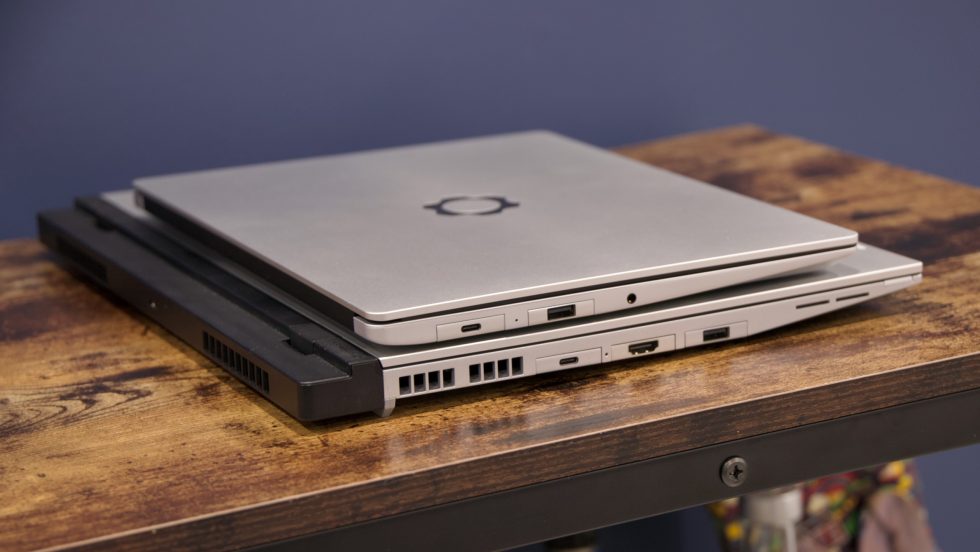
The new Framework notebook is significantly larger than the old one: without a dedicated GPU installed, it weighs nearly a pound more, is 3 inches wider, and 1.5 inches deeper. Adding a graphics module adds two-thirds of a book and nearly an inch of extra depth.
The thing is, it's bigger than the original: the star of the show is the beautiful non-touch matte panel with a resolution of 2560x1600, an aspect ratio of 16:10 and coverage of the DCI-P3 d gamut of around 97%. But it's surprising how much bigger the laptop is, when devices like Dell's XPS 15 or Apple's 16-inch MacBook Pro have tried to retain at least some of the thinness of laptops from smaller companies.
... Computer dedicated to the GPU module the laptop is about two inches deeper than most laptops we've tested. This significantly increases its weight and may prevent it from fitting comfortably in some bags.
| 16th frame (without GPU) | Quadro 16 (GPU) | Apple 16" MBP | Dell XPS 15 9530 | Lenovo ThinkPad P1 sixth generation | HP ZBook Studio G10 | Lenovo Legion Pro 5th Generation 8 | Razer Blade 16 | |
|---|---|---|---|---|---|---|---|---|
| Dimensions (H x W x D, inches) | 0.71×14.04×10.63 | 0.82×14.04×11.43 | 0.66×14.01×9.77 | 0.71×13.57×9.06 | 0.68x14.1x9.6 | 0.72×14.02×9.54 | 0.86-1.05x14.3x10.25 | 0.87x13.98x9.61 |
| Weight | 4.63 kilos | 5.29 kilos | Between 4.7 and 4.8 kilos | 4.21-4.23 pounds | 3.92 kilos | 3.81 kilos | £5.51 | 5.4 kilos |
The design of the Framework Laptop 16 is a unique combination of rugged and smart. It keeps some of the 13's exterior design compromises (boxy design, thick bezels) and adds a few. The expansion module that houses the GPU sticks out from the back of the laptop behind a cover I associate more with huge, monstrous 17-inch gaming laptops, and the keyboard and palm seams give it an unfinished look. .
But that rugged exterior makes up for the elegance inside, and there are plenty of handy design elements to make the laptop more modular and scalable.
Framework Laptop 16's customizable keyboard area is one of its nicest features. There's a central keyboard with individual RGB lighting, flanked by a pair of neat but unnecessary "LED Matrix" pads.
Most impressive is the keyboard and trackpad area, which in Framework 13 is a large removable plate, and in Framework 16 is fully customizable. This is achieved through a clever system of magnets and copper pads that allow the keyboard, trackpad and other components to be connected to the board via USB, without the need for the complex flexible flat cables that usually connect laptop keyboards and trackpads. All keyboard and palm components can be fully disassembled and assembled without tools, including port expansion slots (up to six, compared to four on the Framework Laptop 13, but no headphone jack).
Among all the new features of Framework Laptop 16, this part clearly surpasses the opening capabilities of the original Framework Laptop. All of these components can be carried around without exposing the sensitive interior of the laptop or turning off the computer, making mixing and experimentation easy. Functional web interfaces are also available to program the keyboard's RGB lighting, configure macros, and configure other options. We wish there were some offline backup options available for this so you're not completely screwed if the site goes down: There are beta versions of offline apps available for the "LED Matrix" beauty apps, so I hope it shows up on the keyboard as well. . . maybe even
We remove the "expansion bay", which is almost empty except for a few fans.
Another big step in expansion and improvement is the detachable GPU. The Framework Laptop 16 uses a special physical compression interposer (two surfaces filled with copper data and power contacts held together by screws) to provide an eight-lane PCI Express interface for additional accessories. It could eventually lead to expansion modules that can do anything: the company says a module with extra M.2 slots for more SSDs is on the way, and everything about the interface the Framework uses is publicly available on GitHub. , but a special graphics module. they're probably the most obvious type of accessory (more on the specific graphics module in this laptop's scope).
Framework wrote something about the development of these two backend connectors, including the work done to create middleware for the graphics modules to allow multiple uninstalls and reinstalls. I disconnected the graphics module from the test unit twice with no problems - if you're careful to get it right and don't force anything, you'll be fine.
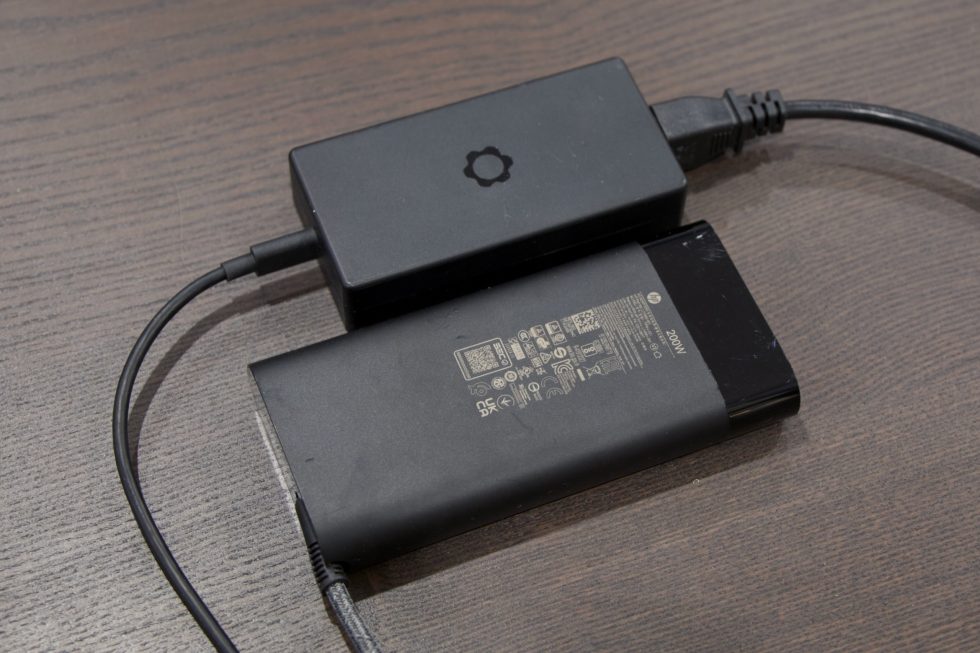
Another interesting design touch of the 16 is the charger, which may be 180W, but is actually quite thin, thanks to the new gallium nitride (GaN) technology. Even a few years ago, this would not have been possible, both because GaN was relatively new and because the maximum power limit of USB-C did not exceed 100W until recently. It's much nicer to carry and use than any gaming laptop supply I've ever encountered.
Accessing the motherboard, fixing the ports
Quadro motherboard for 16 inch laptop.
After removing the keyboard, trackpad, and everything else from the top of the Framework Laptop 16, you'll see its motherboard, which looks like a larger version of the Framework Laptop 13 motherboard. Capable of supporting up to two RAM slots, DDR5-5600 SODIMMs are readily available.
Additionally, the laptop comes with a pair of internal M.2 storage slots compared to the one on the Framework Laptop 16. The downside is that one of them, the one below the main M.2 2280 slot, is a 30mm 2230 slot, for example. these We've seen it on Surface, Steam Deck, and other recent laptops. The good news is that many SSD manufacturers are starting to sell these types of drives to end users, making it much easier to buy than before (it doesn't have as much warranty when you bought it). One less OEM unit from eBay was the only way to go). But the prices will be a little higher and your options and choices will be a little less; Other workstation laptops of this size have room for a pair of 2280 SSDs, which is something we'd prefer to see in an ideal world.
Therefore, accessing the laptop to perform this repair requires more effort than the 13 laptops; you'll need to remove all the keyboard and trackpad modules, disconnect the ribbon cable, loosen a set of 16 captive screws, and remove the flimsy metal shield before getting to the RAM, SSD, battery, and other components. It's not hard, and even Framework fans won't always open their systems, but again, it seems like a small step up in complexity and "anyone can do it!" "simplicity
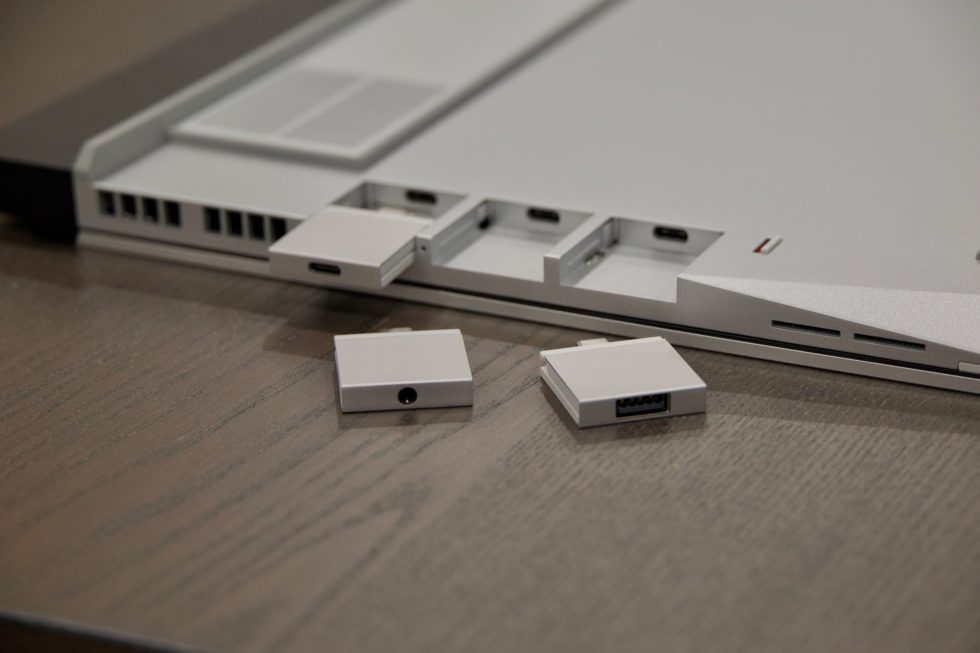
The innovative design of the Framework Laptop 16 continues to be the expansion card system, a series of movable USB-C ports (six on the Laptop 16, four on the Laptop 13) that can be swapped and rearranged at any time to meet your needs. .at any time. . anytime You don't usually need an HDMI port, but have you found it at work? Replace a USB port with an HDMI port. Need three DisplayPorts on a laptop? You can do it too.
This is where the problems begin with Framework Laptop 16. In Intel Framework Laptop 13 versions, all these ports were the same, so you can place them however you want. The AMD Ryzen version had additional limitations, likely due to USB controller and/or AMD chipset limitations: not all ports support USB 4's maximum speed of 40 Gbps, not all ports support image output, and some ports will consume more power. If you connect them with a USB-A expansion card.
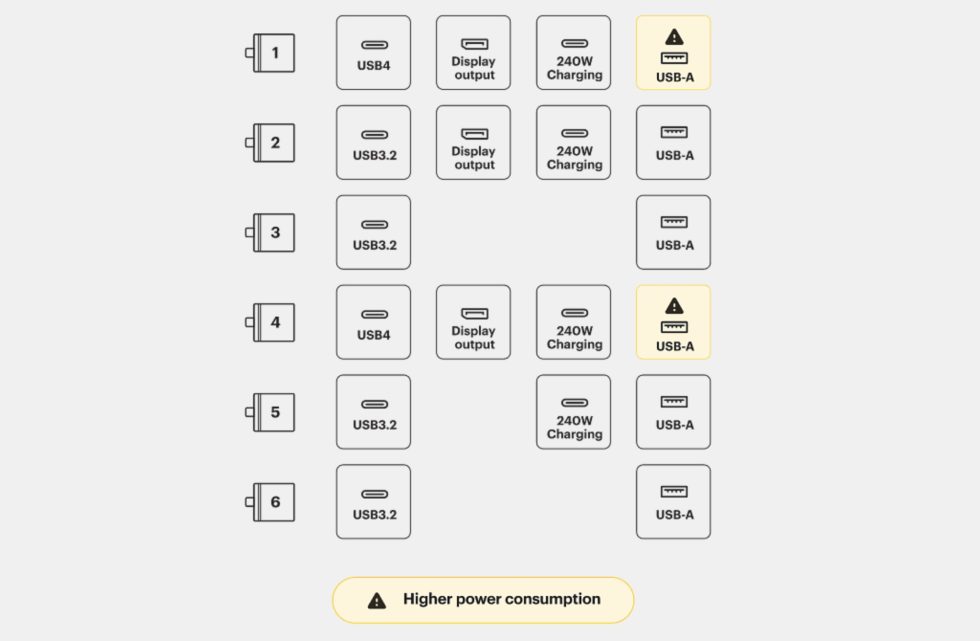
These problems are compounded by the Laptop 16, which has six ports, each with its own capabilities and limitations. In fact, the Framework Laptop 16 does not have a dedicated port that supports all USB-C functions.
Let's summarize the results:
- Only two ports support full USB 4 speeds at 40 Gbps; others support USB 3.2 at 10 Gbps.
- Only four ports support 240W USB-C charging.
- Only three ports support image output. You also get an additional USB-C port on the back of the dedicated graphics module, but it doesn't charge the laptop.
- Both ports draw more power when using a USB-A expansion card.
- The Framework Laptop 16 doesn't have a dedicated headphone jack, so you'll have to use a sound card port if you need one.
Overall, I was able to install all the ports I needed on the Framework Laptop 16. But I had to be careful which expansion slot I used for which port so that the video output wasn't clipped. or reduce battery life. This is AMD's limit, but unfortunately the Framework's innovative transport system is less simple and magical than it used to be.
I'm not sure a large laptop needs such removable ports, at least not as much as the Framework Laptop 13. If you only have room for a few ports, the specific types of ports you choose (and the ability to change them at your discretion). ) can decide which laptop you buy, or at least heavily influence your decision.
But there's room for a lot of ports on a laptop like this: I'm not worried about running out of the same ports or the exact types I need on something like the ThinkPad workstation P1 or the Razer Blade 15. Along with strict configuration. -wise the laptop has 16 ports, I'm not so convinced that such a system is necessary on a large laptop, although it's still nice. Unfortunately, in this case the Framework is up to AMD.
Productivity
If the downside of using AMD in a Framework laptop is the port issue, the upside is the integrated CPU and graphics performance, which is pretty good (even breaking the record for this price range or size category). The Ryzen 7 7840HS and Ryzen 9 7940HS are 8-core, 16-thread Zen 4 processors with a Radeon 780M GPU with 12 RDNA3 GPU cores.
This is the best CPU performance you can get from AMD without upgrading to the 12- or 16-core HX-series processors, which, like Intel's high-end laptop chips, are simply upgraded laptop desktops. This is due to proportionally higher power consumption (55W versus 45W for HS chips) and much weaker integrated GPUs (usually these fast CPUs are reserved for gaming laptops or workstations, which will never come without a separate dedicated GPU).
The HS chips are essentially the same silicon as the 7840U in Ryzen Framework Laptop version 13, with a higher default power limit (45W instead of 28W) to allow the cores to run faster and longer.
In the end, I think the Framework made the right choice in choosing to keep balanced performance whether you have the GPU module installed or not. And if you have a GPU installed, a modern 8-core CPU shouldn't be tight even after a few years if you keep the same CPU but upgrade to a more powerful GPU.
Andrea Cunningham Andrea Cunningham Andrea Cunningham Andrea Cunningham Andrea Cunningham Andrea Cunningham
The Ryzen 9 7940HS is a good choice over the 7840U in the smaller Framework laptop - the 7840HS version should also be faster, but not by much. The Laptop 16 lags behind laptops with 12- or 16-core processors, but many of these systems are still larger and heavier than the Laptop 16.
We won't spend much time retesting the integrated Radeon 780M GPU, which generally performs similarly to the GPU in the Framework Laptop 13, Razer Blade 14, and other laptops that use it. A dedicated GPU is a different story. .
Andrea Cunningham Andrea Cunningham Andrea Cunningham Andrea Cunningham Andrea Cunningham
The frame is removed from the AMD Radeon RX 7700S mobile graphics card. It's the same processor used in the mid-range RX 7600 desktop GPU, with the same 32 compute units and the same 8GB of memory connected via the same 128-bit memory bus. The power limit is lower because it's on a laptop, but it can still run games about 80% faster than its desktop counterpart.
The choice of AMD GPUs makes it a bit different from gaming and work laptops, which (as in the desktop GPU market) tend to favor Nvidia GPUs. Overall, the 7700S is perfect for the screen size and resolution of a 16-inch laptop. It's marketed as a 1080p desktop GPU, and if you want to game at 2560 x 1600 and use the screen's full 165Hz refresh rate, you'll often be disappointed. But it will handle most of the tasks you give it quite well; In addition to all the tests we tried, the Laptop 16 successfully ran a three-hour multiplayer session of Baldur's Gate 3 connected to an external 4K monitor. At slightly lower quality settings and using FSR scaling, I got a good balance between graphics quality and frame rate.
But it's hard not to think that Nvidia would be better suited here, and Nvidia's plug-in graphics will likely be high on the wish list for future releases (the team should know based on two years of experience). "when will the AMD version be released?" answers to questions Framework Laptop 13. Nvidia's power efficiency advantage is the most important factor here, but overall higher DLSS scaling quality and better ray tracing performance are also attractive benefits, and there are plenty of rendering and AI workloads that run better (or just better). Nvidia. GPU.
Andrea Cunningham Andrea Cunningham Andrea Cunningham
We haven't tested many mobile GPUs this generation, but the mobile RTX 4070 in the latest Razer Blade 14 is an interesting point of comparison. Based on the same processor as the desktop 4060 Ti, it delivers the same performance as the 7700S in non-raytracing games and much better raytracing performance for a similar power consumption range (assuming software-provided power consumption data). , which are not always accurate when comparing different GPU models from different manufacturers).
All of this means that the Framework Laptop 16 is a pretty decent gaming laptop if you set your expectations accordingly. But it's quite expensive compared to a typical mid-range gaming laptop with similar specs, like the Lenovo Legion Pro 5 Gen 8 (currently $1,350, compared to around $2,200 for the Framework Laptop 16 with the same amount of RAM and storage).
Andrea Cunningham Andrea Cunningham Andrea Cunningham Andrea Cunningham
Of course, part of what you're paying for is the ability to upgrade your frame to a better GPU in two or three years, when that Lenovo laptop is using the same GPU that shipped with it. Another part of what you pay for is the promise of customization and stability. These calculations are more difficult to make when the cost of an upgradeable laptop and the cost of the upgrade are quite close to the cost of two regular laptops.
Battery life

Battery life has always been Framework's weak point, and the company's laptops have gone from "acceptable" to "not really great" over the years.
The Laptop 16 combines both; Without an external graphics card, the 85Wh battery lasted just over eight hours in our PCMark 10 battery test. That's not surprising, especially considering the size of this battery, but it's quite a performance, about the same as a normal working day (when travelling). a laptop). . 16).
Battery life with the graphics module installed was just over five hours, even with hybrid graphics enabled. And this is in a test where the dedicated GPU isn't actually used, even though it's there. Other laptops with dedicated GPUs we've tested over the years have failed the overall battery performance test; the Lenovo ThinkPad X1 Extreme Gen 5 released a few years ago also has better performance and a powerful 4K display.
So if you're traveling, maybe leave the GPU module at home or pack it separately. Considering the size, weight and battery life, the best thing about its modularity is that you don't have to constantly live with all its flaws.
Scattered thoughts

Framework Laptop 16 is a set of modular parts that I will try to cover in this review as well. With that in mind, here are some other random thoughts from spending two weeks with the thing:
Keyboard, trackpad and separators
Aside from the RGB web controls and macros I mentioned earlier as a real keyboard, I think the 16 keyboard is a good one. The hardware is standard, and apart from a few issues when I hit enter every time I type an apostrophe (I don't know why it happened, but it's been almost constant for the past few days), I had no problems. The same goes for the trackpad, which is precise and not so large that it causes problems with palm deflection.
Note that I don't use the central keyboard, central navigation key, and numeric keypad, even on a large laptop. The framework says that the ratio of people with and without a numpad is always about 50/50 in any group you ask for, so there's a numpad you can use if you want.
Framework also sent us "LED Matrix" spacers, white LED grids that cost $49 each (regular spacers come in different colors to match your custom laptop panel and usually cost $10 or $15 each). It's beautiful and my 4 year old son was fascinated by the ability to draw his own pictures or write his own words; the installer also allows you to create animations and other useful things with them. But they fall asleep quite quickly and sit idle most of the time. I'd call them cool gadgets, but I'm not sure I'd recommend spending $100 on a pair.
Fan noise
The GPU module fan is making noise. All gaming laptop fans make quite a lot of noise when you use them, but they have a distinctive sound that's hard to ignore. I recommend noise canceling headphones - every time I take them off, I'm always surprised to remember that a laptop makes so much noise.
If you're doing a CPU-intensive task, such as software video encoding or other multi-threaded work, you may be forced to turn on the fans for long periods of time.
Disappointing speakers, webcam
The Framework Laptop 16's speakers are also a real disappointment, considering how good they sound on a laptop this size. Their sound is not that terrible - they are typical laptop speakers. I think I'm spoiled by how much space a 16-inch MacBook Pro or 15-inch MacBook Air has.
The webcam is also quite disappointing, producing a serviceable but grainy image, which makes it difficult to balance exposure if you're sitting with a window behind you or if the room you're in has uneven lighting. speakers, all of which are not unusual for laptops. But there are other cars in this price range that do a better job.
Unique but not (yet) mandatory
I think I went into this review wanting to like Framework Laptop 16 more than I did.
I remember feeling the same way about the original Framework laptop, but for different reasons. My concern then wasn't the laptop itself (which was generally decent and often close to a ThinkPad or Dell XPS 13), but whether the Framework would last long enough to hold its own. Over the past couple of years, the company has released everything from updated motherboards to updated lids, hinges, and speakers for the Framework Laptop 13. Framework has built some confidence and I'm sure Framework Laptop 16 will achieve the same level. . the quality attention
My issue with the 16 laptop has more to do with the design of the computer itself, its design and the needs it fulfills, things that are more basic and harder to fix.
This is a very special laptop and it's clear that a lot of thought and care has gone into the design and construction. It does some pretty impressive stuff, including what might (finally) be a viable system for upgraded laptop GPUs. It works quite well. Basics like the keyboard, trackpad, and screen are well-made, while the non-existent elements (like speakers and webcam) are more peripheral.
But it is expensive compared to other laptops. It is quite large, especially with the graphics module installed, but even without the GPU coming out of the back, it is not small . Custom ports don't seem important on a larger laptop, and the significant limitations on customization on the Notebook 16 make the whole concept less charming and flexible than the original Framework laptop. Battery life is decent at best and very poor at worst. No 4K display option (yet?) No touchscreen (yet? Even if the original Framework is for the laptop). AMD's GPU has some significant disadvantages compared to similar Nvidia GPUs that are not (yet?) available.
I admit that some of this may be due to a general skepticism about this laptop. If you're planning to spend more than $2,000 on a 5-pound laptop, most people are better off buying multiple computers: an affordable thin and light laptop with battery life and portability, and a good mid-range desktop with performance. and comfort So you'll have to accept two systems instead of just one, but this setup eliminates the drawbacks of a large laptop, giving you two systems, each better suited to the task at hand. With Framework Laptop 13 and a custom office, you won't miss a repair or upgrade opportunity!
But even if I'm not crazy about this laptop, I really like the idea and I'm glad it exists. Like the first Laptop 13 frame, this is a starting point, a proof of concept that can be improved over time. When it gets a little more powerful, a combination of price cuts, updated options, and factory seconds can improve its value. It can and will be improved. But this entry-level version has great potential and simple convenience.
ok
- An evolutionary modular version of the Laptop 13 frame with improved performance and more ports.
- A great screen with a fast cooling rate and a non-glaring matte finish.
- The customizable keyboard area is practical and creative.
- High performance processor with AMD Ryzen chip 7000 and 8 cores.
- The dedicated Radeon RX 7700S GPU is powerful enough to handle more tasks than you can throw at it.
- Detailed disassembly and repair instructions.
It's bad
- A bit pricey for what you get.
- The largest and heaviest version of laptops with a diagonal of 15 to 16 inches.
- The GPU module adds size and weight.
- Currently, scalability is a hypothetical future advantage, although the framework already has a strong reputation.
Ugly
- Rare and original port restrictions somewhat spoil one of the main assets of the laptop 13.
Advertisement Image: Andrew Cunningham
International Women's Day 2016 | House of Lords
Labels: Laptop








